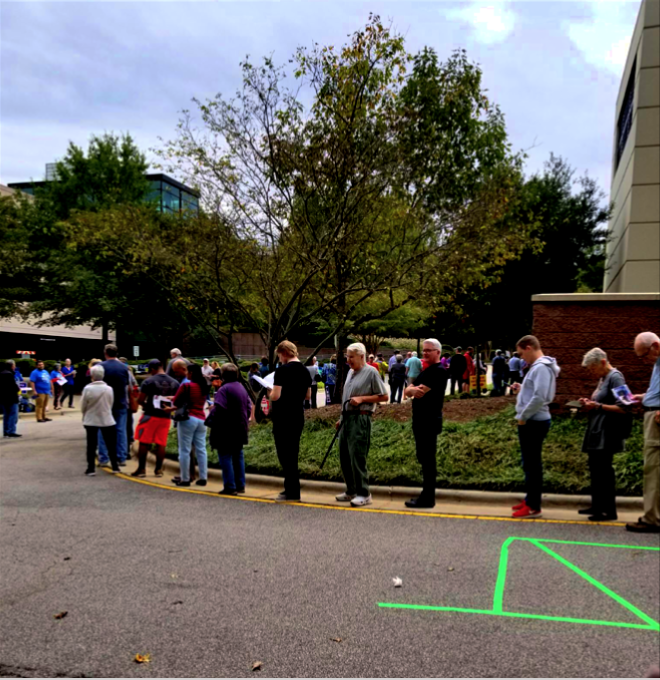
According to data from the North Carolina State Board of Elections and Ethics Enforcement released October 19, 136,300 voters cast ballots at Early Voting sites on the first day of this year’s 18-day Early Voting period. By contrast, over 121,200 North Carolinians cast ballots on the first day of Early Voting in 2014, the last midterm election, and 165,900 cast ballots on the first day of Early Voting in 2016.
Wednesday’s Early Voting total represents a 12.5% increase in the number of ballots cast on the first day of Early Voting since 2014, surpassing the 6% growth in voter registration that occurred during that time.
The increase in the first day from 2014 is notable for a variety of reasons: the 2014 period was only 10 days, while this year’s is 18 days; the 2014 General included a high profile Senate election which this midterm does not; and the EV period started on a Wednesday this year instead of the usual Thursday. That said, some counties that did not open satellite locations (locations other than the Board of Elections) on the first day of Early Voting in 2014, did have satellite sites open on the first day this year. Especially given the variety in the lengths of Early Voting periods in recent elections, it is hard to gauge turnout from the only the first day of Early Voting this year.